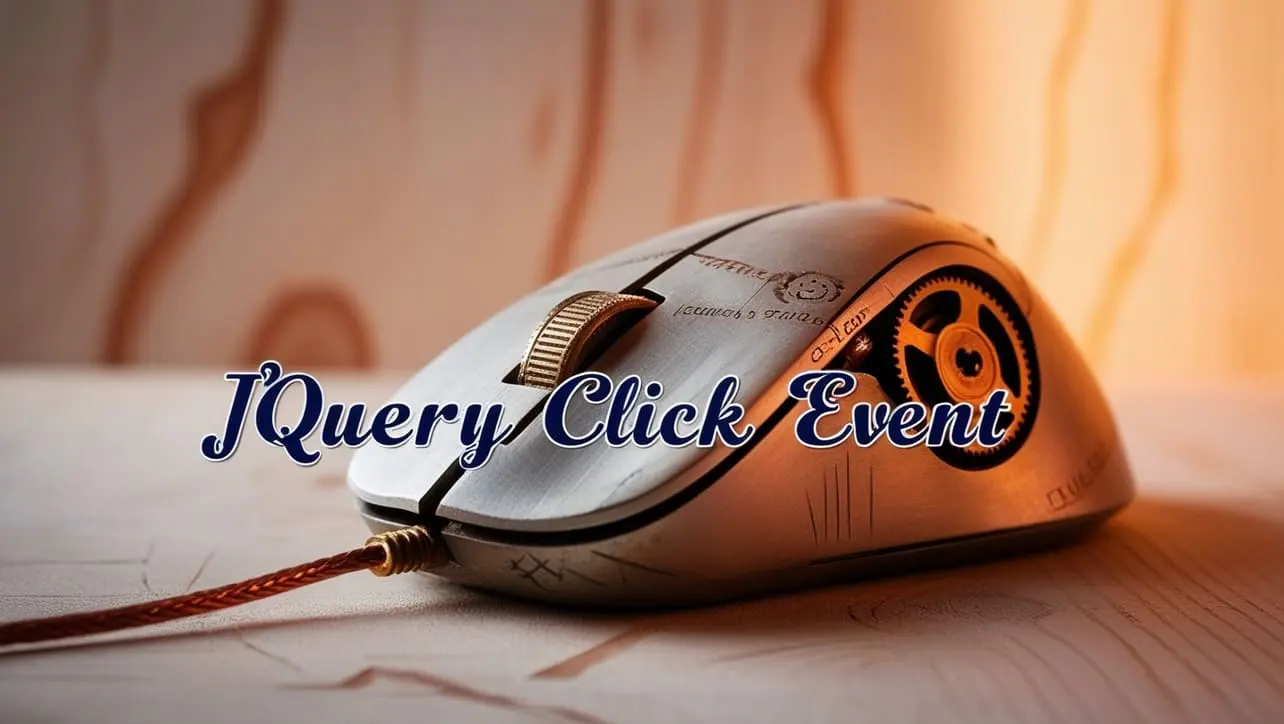
jQuery Topics
- jQuery Introduction
- jQuery Callbacks
- jQuery deferred
- jQuery selectors
- jQuery Ajax Events
- jQuery Ajax Methods
- jQuery Keyboard Events
- jQuery Keyboard Methods
- jQuery Form Events
- jQuery Form Methods
- jQuery Mouse Events
- jQuery Mouse Methods
- jQuery Event Properties
- jQuery Event Methods
- jQuery HTML
- jQuery CSS
- jQuery Fading
- jQuery Traversing
- jQuery Utilities
- jQuery Properties
jQuery click Event

Photo Credit to CodeToFun
🙋 Introduction
jQuery has long been a staple in web development for its ability to simplify tasks such as event handling. One of the most commonly used events is the click event, which occurs when an element is clicked by the user. While the .click() method has been deprecated in jQuery, the .on() method provides a more versatile and efficient way to handle click events.
In this guide, we'll explore how to use the .on() method for click events, providing clear examples to help you understand its usage and benefits.
🧠 Understanding click Event
The .on() method in jQuery is a powerful tool for attaching event handlers to elements. It allows you to specify the event type, along with optional data and a handler function. When it comes to click events, .on() provides a flexible way to handle clicks on elements, whether they are present in the DOM at the time of binding or dynamically added later.
💡 Syntax
The syntax for the click event is straightforward:
$(selector).on("click", [, eventData ], handler)📝 Example
Basic Click Event Handling:
To handle a
clickevent on an element with a specific ID, you can use the .on() method as follows:index.htmlCopied<button id="myButton">Click Me</button>example.jsCopied$("#myButton").on("click", function() { alert("Button clicked!"); });This code will display an alert message when the button with the ID myButton is clicked.
Handling Click Events on Dynamic Elements:
The .on() method is particularly useful when dealing with dynamically added elements. For example, let's say you have a list of items and you want to handle
clickevents on them, even if they are added after the initial page load:index.htmlCopied<ul id="myList"> <li>Item 1</li> <li>Item 2</li> </ul> <button id="addButton">Add Item</button>example.jsCopied$("#addButton").on("click", function() { $("#myList").append("<li>New Item</li>"); }); $("#myList").on("click", "li", function() { alert("You clicked on: " + $(this).text()); });In this example, clicking the "Add Item" button dynamically adds a new item to the list. The
clickevent handler for the list items is delegated to the ul element, ensuring thatclickevents are handled even for elements added dynamically.Passing Event Data:
You can pass additional data to the event handler using the eventData parameter. This can be useful for providing context or additional information to the handler function.
Event Delegation:
Utilize event delegation by attaching event handlers to parent elements, especially when dealing with dynamically added elements. This ensures that events are properly handled even for elements added later.
🎉 Conclusion
The .on() method in jQuery provides a powerful and flexible way to handle click events on elements. Whether you're dealing with static elements or dynamically added ones, .on() offers a versatile solution.
By mastering its usage, you can efficiently manage click events in your web applications, enhancing interactivity and user experience.
👨💻 Join our Community:
Author

For over eight years, I worked as a full-stack web developer. Now, I have chosen my profession as a full-time blogger at codetofun.com.
Buy me a coffee to make codetofun.com free for everyone.
Buy me a Coffee












If you have any doubts regarding this article (jQuery click Event), please comment here. I will help you immediately.